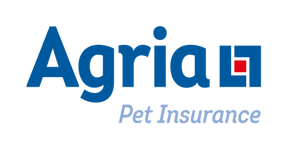Are you worried about your dog suffering from separation anxiety? If your world opening up post-COVID means your dog will be left alone more, read our guide to helping them cope being 'home-alone'.
10 June 2021
Zero to Home-Alone Hero – your guide to helping your dog cope being on their own
Part one
We hope that we’re getting closer to seeing lockdown and COVID restrictions lifted, and working life getting back to some kind of normal.
For lockdown puppies or even dogs who have had over a year of their families being at home, this could come as an unwelcome shock. Unless dogs have learned that being on their own isn’t anything to worry about, finding themselves home alone for the first time in their lives is likely to be hugely stressful for them.
Hopefully, you will have been preparing your dog for your return to work, but if not, and you suddenly find that you have just a few weeks to get your dog used to you not being there all the time, what can you do?
Step one
Assessment
Before you go any further, take time to assess just how much of an issue you might have on your plate here. You might find that you have little to worry about - or you might realise that you need a little more help…
- Have you regularly been leaving your dog on their own for short periods during lockdown with no apparent problems?
- Is your dog generally confident and secure?
If you can answer ‘yes’ to the above, and no to the below – you are in a good place! However...
- Does your dog follow you everywhere in the house and never let you out of your sight?
- Does your dog show any of the symptoms of separation-related behaviour problems when you leave them? These could include:
- Barking, whining or howling
- Panting or drooling
- Pacing
- Loss of toilet training
- Scratching at doors or windows
- Destructiveness
- Self-mutilation (chewing feet/paws etc)
- General anxiety
- Aggression (when you leave, when you return or unexplained aggression at other times)
Some of these you might be unaware of but others you will see the evidence of - or your neighbours will tell you!

If you have answered ‘yes’ to any aspect of questions 3 or 4, contact a qualified behaviourist - now! You can find details of a reputable behaviourist by following either of these links:
However, if you feel confident that your dog is not showing any symptoms of separation-related behaviour problems, it’s time to look at adjusting your routine, to match how things will be.
Create you new routine
Think about what your day will look like when you go back to work. You will need to walk and feed your dog before you go, come home for lunch if you can, and walk, feed, train and play with your dog when you come home. Begin to adjust your dog’s routine so that all of these things start to happen at the times of the day they will do when you are back at work. This will give your dog some predictability in their day.
Once you have put your new routine in place and kept that going, if all is going well, you'll be ready for step two - launching next! Watch this space...
With an Agria Pet Insurance policy, you can access the free Pet Health Helpline, 24 hours a day, 7 days a week. The veterinary-trained team will advise on any concerns or queries that you may have over your pet’s health – much like the NHS 111 service for people. Call free on 03333 32 19 47.
